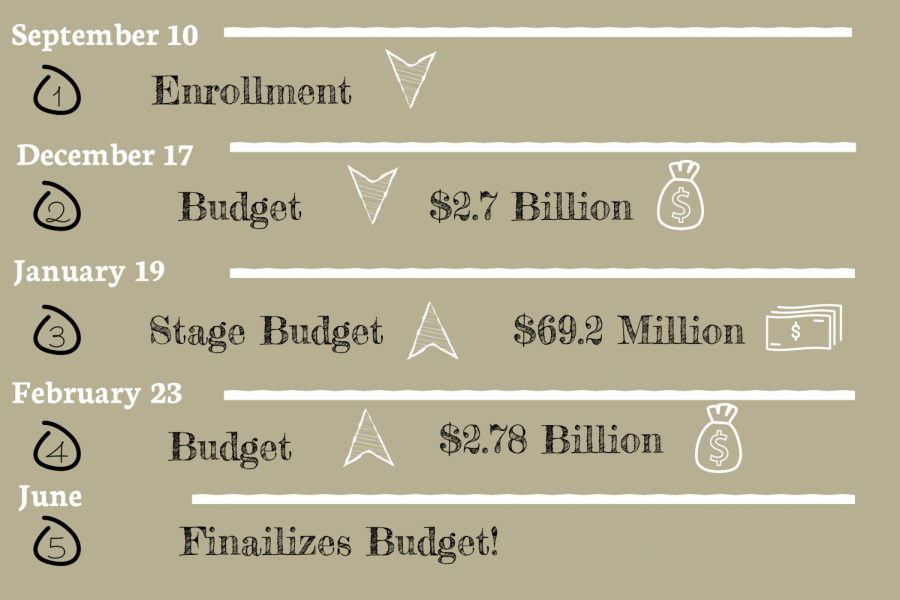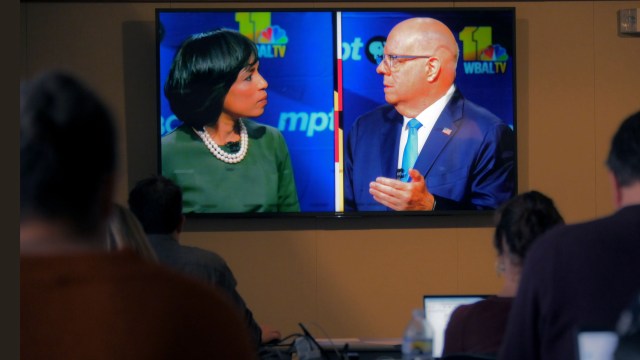Hogan proposes ‘surprise’ grant, quells fears of MCPS budget reductions
The BOE’s approval of an increased budget comes after multiple significant pandemic-induced budget adjustments for the next fiscal year.
March 14, 2021
The Montgomery County Board of Education gave initial approval to a $2.78 billion school system budget for the next fiscal year on February 23, representing a 0.9% increase from the current budget and reversing residents’ fears of a once-in-a-decade funding reduction.
The Board will finalize the budget in June after the County Council revises the plan throughout the spring.
In December, Superintendent Jack Smith proposed a $2.7 billion budget, which would have been a 1.5% decrease from the current budget. The reduced proposition reflected MCPS officials’ expectations that the school system would lose significant state revenue before the next fiscal year. The amount of state funding a school district receives typically correlates to the district’s enrollment, and MCPS’ enrollment is down almost 6,000 students this year due to the pandemic.
In January, however, Maryland Governor Larry Hogan revealed his annual state budget proposition, which would provide MCPS with $69.2 million in aid to offset the enrollment-based funding reduction. The state legislature will modify Hogan’s proposal before granting final approval in the spring, but the amount is likely to remain intact because the chamber has recently prioritized education spending.
In response to the governor’s proposition, the Board unanimously approved a $24.2 million increase from the current budget.
“It was a huge relief, and we really have to say ‘thank you’ to the governor,” said Board of Education member Patricia O’Neill, who’s been unafraid to criticize Hogan in the past. “What he did paved the way for the positive situation that we’re in.”
In a letter to high-ranking state legislators in January, Hogan attributed school systems’ grant allotments to Maryland’s success in avoiding an economic crisis during the pandemic.
“Our state economy didn’t experience the drastic downturn expected by leading national economists, and we now face deficits that pale in comparison to the initial doomsday predictions,” Hogan wrote in his letter.
Hogan’s chief of staff, Amelia Chassé Alcivar, noted that several federal relief packages from 2020 helped inspire Hogan’s spending decision. Still, determining education funding was “more challenging than in most years,” Chassé Alcivar said.
“Due to all school systems going to some form of virtual or hybrid instruction, there were complications in the process of getting accurate enrollment figures,” she said. “There were some challenges in the process that’s used to determine the formulas for funding that are mandated in the state budget. But the governor made it a priority to ensure that no school system receives less funding than it received last year, even if their figures showed declining enrollment.”
The governor’s allocations for MCPS came as a surprise to some student education advocates, since Hogan has frequently come under fire for attempting to slash school districts’ funding during his six years in office. Most recently, in May 2020, Hogan vetoed the multibillion-dollar Blueprint for Maryland’s Future Act, which the state Legislature subsequently overturned in January. The Act ensures that substantial revenue will flow to all Maryland school systems over the next ten years.
“He doesn’t seem to be the biggest advocate for public education funding, being so strongly against the Blueprint for Maryland’s Future,” said Montgomery Blair High School junior Marijke Friedman, who urged state legislators to overturn the Blueprint veto during a public hearing in November. “But this is a good sign for the future that Maryland will continue to invest in public schools. Any money you put in there is just going to come back and benefit the economy in the long run.”
The Board’s new plan maintains the priorities of Smith’s initial budget proposal, including preserving staff employment, increasing access to mental health support, aiding students who are struggling academically and continuing a virtual learning option into the fall.
On March 15, the county executive will announce Montgomery County’s contribution to the budget. Under Maryland’s “maintenance of effort” law, the county must provide the school system with at least the same amount of funding per student as the previous year. Since MCPS has lost enrollment this year, the County Council isn’t obligated to provide the school system with more funding than last year, indicating that the Board’s budget could take a slight dip.
Montgomery County Councilmember Craig Rice, however, has implied that the county will likely provide the school system not only with the required maintenance of effort law funding, but with the additional $50 million that the Board requested.
“We’re poised right now to really start continuing with significant investment in terms of education funding,” said Rice, who chairs the County Council’s Education & Culture Committee. “When I look at the Board of Education’s request, I think it’s in line with what this county has continued to do when it comes to investment in education, taking this system to the next level and really reaching all of our children.”
O’Neill doubts that the plan will undergo any substantial reductions in the coming months. If anything, she anticipates that the budget may increase, especially if the federal government adopts a relief package that provides funds for reopening schools.
To conclude a “very unusual” budget year, as O’Neill described it, the Board and the County Council will modify the plan throughout the spring. The final budget will take effect July 1.
“We don’t know how much we will have, but whatever comes, we’ll put it to good use,” O’Neill said. “Things look better than I ever expected.”









